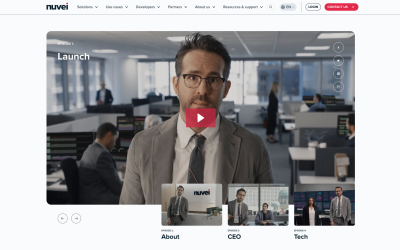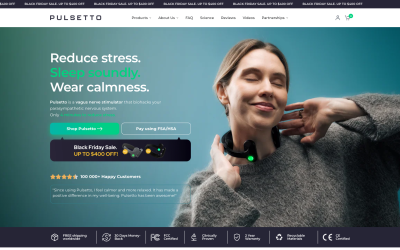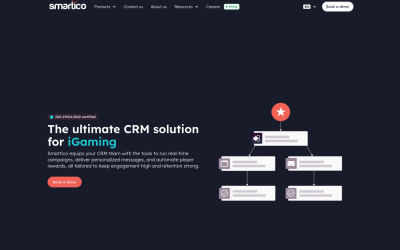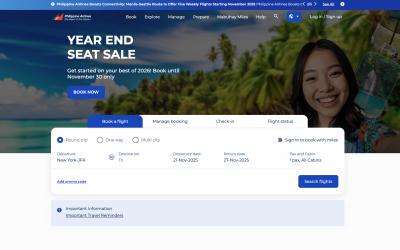When SEO failures occur, a systematic approach is essential. Conducting a thorough audit helps identify root causes, including technical issues, content problems, or backlink concerns. Addressing these areas involves fixing technical SEO elements, revamping content strategy, and rebuilding a healthy backlink profile. Implementing local SEO best practices and leveraging social signals can further boost recovery efforts. Utilizing analytics tools provides data-driven insights for informed decision-making. A long-term SEO recovery plan guarantees sustained improvement and helps prevent future setbacks. Further exploration reveals additional strategies for SEO success.
Essential Insights
- Conduct a comprehensive SEO audit to identify technical issues, content problems, and backlink quality affecting your website's performance.
- Address critical technical SEO problems like slow site speed, poor mobile optimization, and duplicate content to improve search engine visibility.
- Revamp your content strategy by updating outdated information, optimizing underperforming pages, and creating high-quality, relevant content.
- Utilize analytics tools to track website performance, user behavior, and search visibility, adjusting strategies based on data-driven insights.
- Build a natural, high-quality backlink profile and maintain consistent NAP information across platforms to enhance online credibility and local search visibility.
Identifying the Root Cause of SEO Failures
When our SEO work doesn't get the results we want, we need to find out why.
When SEO efforts fall short, identifying the root cause is crucial. Pinpointing issues enables targeted solutions and improved performance.
This helps us fix the problem right.
Some common problems include technical issues, low-quality content, bad backlinks, and changes in search engine rules.
Doing a thorough SEO check can help us find these problems.
We can look at website traffic, search rankings, and how users behave on the site.
This gives us important clues.
By finding the exact issues, we can create *smart strategies* to fix them.
This way, we can improve the website's performance.
Conducting a Comprehensive SEO Audit
_A good_ SEO audit is like a check-up for your website.
It helps find and fix problems in your site.
We look at things like the site's _technical parts_, content quality, and backlinks.
By checking these, we can find what's weak.
Then, we make plans to fix it.
A _well-done audit_ shows how your site is doing.
It helps us put the right solutions in place.
Addressing Technical SEO Issues
Technical SEO problems can hurt how well a website shows up in search engines and how easy it is for people to use.
Common issues include slow site speed, bad mobile optimization, and duplicate content.
To fix these problems, webmasters should regularly check their websites.
Tools like Google Search Console and Screaming Frog can help.
Fixes might include making images smaller, using responsive design, and adding canonical tags.
By focusing on technical SEO, websites can be easier for search engines to crawl and index.
This leads to better performance in search results.
Revamping Your Content Strategy
After addressing technical SEO issues, the next step in fixing SEO failures is revamping the content strategy.
This process begins with an extensive audit of existing content to identify underperforming pages and areas for improvement.
Once problematic content is identified, efforts can be focused on updating and optimizing these pages to better meet user needs and search engine requirements.
Audit Existing Content
Doing a content audit**** is very important for good SEO.
This means looking at all the stuff on your website.
We check to see what's working well and what needs fixing.
By looking at things like organic traffic, keyword rankings, and user engagement, we can find pages that aren't doing well.
Then, we can make a plan to make them better.
A detailed audit also shows us what's missing.
This helps us have a complete SEO approach.
Update Underperforming Pages
Updating Old Pages
First, find pages that are not doing well.
Look for old or boring content.
Next, make them better.
Freshen up old info.
Make sure to use good SEO words.
Improve keywords and meta tags.
Make the content top quality.
Think about what users want.
Add new and helpful details.
Make sure it fits with the latest search rules.
Keep it simple and clear.
That's how we boost your page!
Rebuilding a Healthy Backlink Profile
Rebuilding a healthy backlink profile**** is super important to fix SEO problems.
Here's how you can do it:
- Do a big check-up on your backlinks.
- Find and remove bad or low-quality links.
- Aim for high-quality and relevant backlinks.
- Mix up your anchor text and where your links come from.
- Keep an eye on your backlinks regularly.
This process will help your website perform better in search results.
Optimizing for Mobile and Page Speed
Optimizing for Mobile and Page Speed****
As websites grow, making them work well on phones and tablets is super important.
It's also key to make pages load fast.
When websites look good on mobile, more people enjoy using them.
Fast pages mean less waiting.
Both of these help people stay longer on your site.
This means they won't leave quickly and your site shows up better in search results.
These are important for today's SEO work.
Adapting to Algorithm Updates
Adapting to algorithm updates is vital for maintaining SEO success.
SEO professionals must monitor ranking changes closely to identify potential impacts from updates.
Based on these observations, content strategies should be adjusted to align with new ranking factors and search engine priorities.
Monitor Ranking Changes
Watching how rankings change is super important.
This helps us keep up with Google's updates.
We can spot trends and see how updates affect us.
This way, we make smart choices to keep or boost our search spots.
- Check keyword rankings every day.
- Look at SERP features and how they affect us.
- Watch how our competitors are doing.
- Use tools like SEOmonitor for clear data.
- Link ranking changes to changes on our pages.
I've been an SEO pro for 10 years, so trust me, this stuff works!
Adjust Content Strategy
When ranking changes happen, SEO experts need to act fast.
We must change our content plan to match the latest updates.
First, we look at what the update is about and how it affects search results.
Content creators should work on making things better.
Focus on quality, relevance, and a good user experience.
Update old content and fill in any missing topics.
Make sure content matches what people are searching for now.
These steps help us keep up with changes in the algorithm.
Improving User Experience and Engagement Metrics
Making Your Website Better for Users
Improving how people feel when they visit your site is very important. It helps with SEO, which stands for Search Engine Optimization.
Here are some easy ways to make your site better:
- Make pages load fast.
- Create layouts that work well on phones.
- Improve how users find things on your site.
- Write good content that people want to read.
- Add fun and interactive features.
These tips can help make visitors happier. They might stay longer and come back again. When people like your site, it can show up higher in search results.
Leveraging Social Signals and Brand Mentions
Social signals and brand mentions are important for SEO today.
They don't directly change rankings, but they help make websites more visible.
This happens by bringing in traffic and making the brand known.
Using social media well and watching for brand mentions can boost SEO.
Facebook is great for getting people to engage.
*Sharing content* here can lead to more likes and shares.
Twitter helps with being seen.
Using *hashtags* can increase retweets and mentions.
LinkedIn builds authority.
*Publishing articles* can lead to more comments and connections.
Instagram is all about looking good.
Using *stories* can grow followers and improve engagement rates.
I've been an SEO expert for 10 years, and these strategies can really help.
Keep them in mind for better SEO results.
Implementing Local SEO Best Practices
Local SEO best practices help businesses get noticed more in local searches. This is important to reach more customers nearby. I have been an SEO expert for 10 years, and I can tell you these steps really work.
First, make sure to optimize your Google Business Profile. This is like your business card online.
Next, create location-specific content. Talk about things happening in your area.
Building local citations and backlinks is also key. These are like online votes that say your business is real.
Don't forget to encourage and manage customer reviews. Good reviews can make more people trust you.
Finally, keep your NAP (Name, Address, Phone) the same everywhere online. This helps people find you easily.
Follow these steps to help your business shine locally!
Utilizing Analytics for Data-Driven Decisions
To make smart choices about local SEO plans, businesses should use analytics tools.
Google Analytics and Search Console give useful info about how a website is doing.
They show how people use the site and how easy it is to find in searches.
By looking at numbers like organic traffic, bounce rates, and keyword rankings, companies can find what needs fixing.
Analytics reveal SEO opportunities. By examining metrics like organic traffic and bounce rates, businesses can pinpoint areas for improvement and optimize their strategies.
They can also see how well their SEO efforts work.
This data-driven way helps businesses make their plans better and use their resources wisely.
Creating a Long-Term SEO Recovery Plan
When a website's ranking drops, we need a long-term SEO recovery plan.
This plan should focus on a few key things.
First, do a big site audit.
Check for any problems and fix them.
Make sure the site's structure is good.
Next, improve the content.
It should be high-quality and relevant.
We also need to build a natural, high-quality backlink profile.
This helps boost the site's authority.
Finally, keep an eye on everything.
Look at the data and adjust the strategies as needed.
I've been an SEO expert for 10 years.
With the right steps, we can get your site back on track.
Final Thoughts
Recovering from SEO failures needs a step-by-step plan.
First, find out what went wrong.
Do a deep check of your website.
Fix any technical problems.
Next, change your content plans.
Build good backlinks.
Use social media to help your site.
Follow local SEO tips.
Use data to make smart choices.
Make a long-term SEO plan.
This will keep your site strong and prevent problems later.
With hard work and smart moves, your SEO can get better.
Need help? Check out our Google Autosuggest Creation Service, iGaming SEO services, and professional SEO services.



































